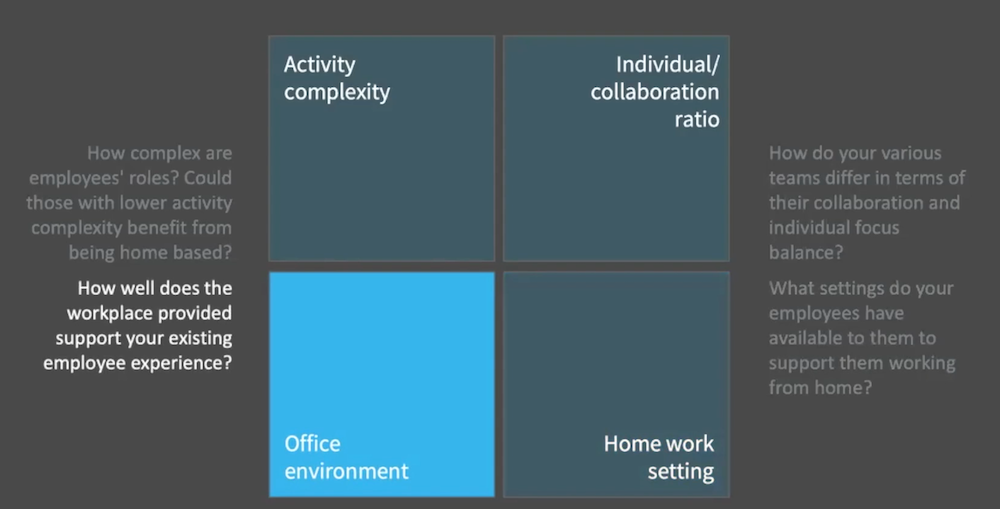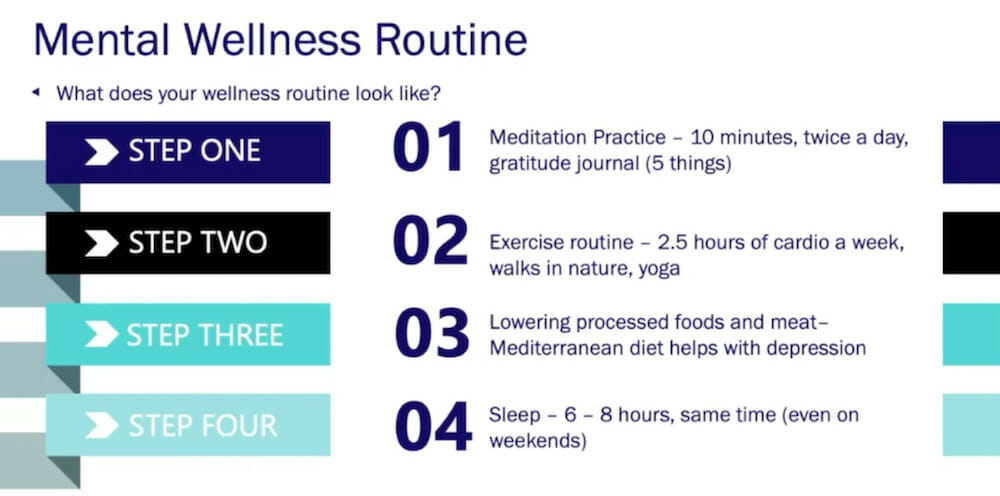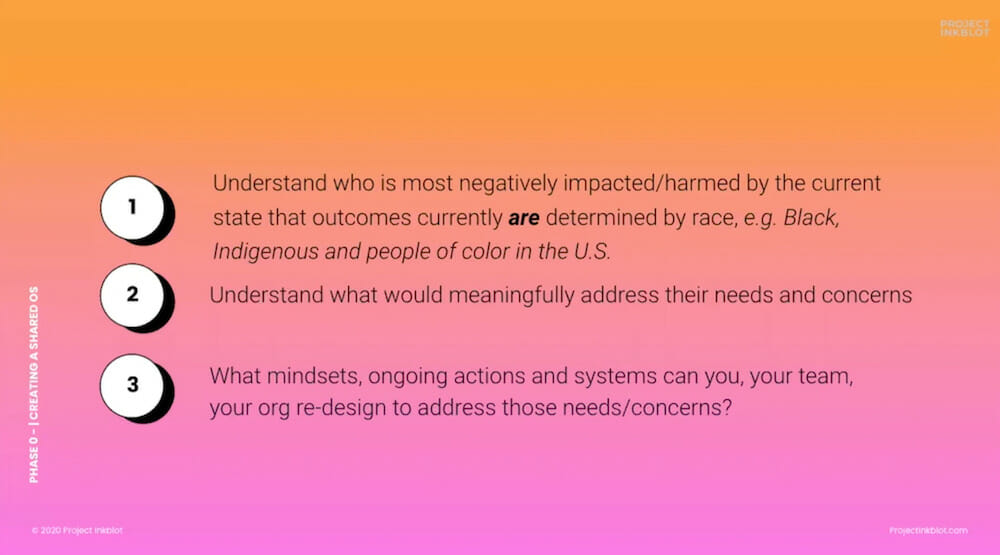Workplace Innovation Summit 2020 Recap
From December 7-11, 2020, the CoDesign Collaborative community gathered virtually for a week full of learning, engagement and fun through the Workplace Innovation Summit. This event focused on disrupting the workplace paradigm, taking advantage of the volatile environment that the ongoing pandemic has created in the workplace as a catalyst for much needed change and improvement with how we work.

By Sara Magalio
Some questions that we worked to answer: Can we create a workplace that’s equitable? Is it possible for a workplace to support employees with children? Can work be engaging and meaningful for every employee? We think that the answers to all of these questions can be yes, if we take the time to listen and learn from others, innovating and working toward a future where the workplace is optimized for everyone in it.
Below, you will find a recap of some of the highlight moments throughout the week of programming from the Workplace Innovation Summit. If you were an attendee and are interested in seeing recordings of some of the presentations and workshops, please visit the attendee portal that was emailed to you, and if you have any questions please contact us at info@codesigncollaborative.org.
Monday
Felice Silverman, Principal at Silverman Trykowski Associates and Janet Swaysland, Engagement Strategist at Bluefire Partners kicked off the event with opening remarks that addressed the three keywords for the summit: connect, reflect and reform, and how they would be addressed in future events. “For me, the theme could not be more perfect for the time that we’re in,” Felice said. “We talk about the importance of connecting, especially in this moment. So we will connect, and then reflect on where we have been this year, how we got here, and how we responded as designers.” “We learned this year that things change, and things change fast,” she continued. “Design plays a critical role in how we adapt, survive and thrive during change.”
Next, Emily Klein, Director of Workplace at Perkins and Will and Jennifer McGrory, Senior Associate also at Perkins and Will, presented on reimagining the future of the workplace, and specifically how it will adapt and evolve over time in the wake of COVID. Jennifer noted that “2020’s lessons learned will forever change companies’ openness to a flexible, hybrid office environment.”

Jennifer and Emily shared these statistics from a Perkins and Will staff survey.
Afterward, innovation firm Cactus founders Noah Waxman, who is Head of Strategy, and Lucas Werthein who is Head of Technology, presented on how the workplace can evolve into the future through holistic, personalized experiences built around user bio-markers and health data. The two posited that people’s experiences in healthcare settings can and should be engaging, empowering, personal and even fun. Noah described his use of the term “fun” as “radical,” because it is a word that is virtually never associated with healthcare. He questioned, “Why shouldn’t those pictures of Tony Stark’s laboratory that I showed at the beginning of this talk be a North Star for what it’s like to get your mind and body tuned up?”
Lisa Kay Solomon, who is an author and the Designer in Residence at Stanford’s d.school, held the day’s keynote speech, in which she discussed what it means to lead like a futurist in today’s rapidly changing world. Lisa emphasized the point that designers must live in the future, thinking about different scenarios that can happen down the line and determining what needs to be done to make those future scenarios a reality. She explained that in her “Inventing the Future” course at Stanford, she uses debates as a key tool to prompt students to think about future utopias and dystopias, and to work through the different implications of those theoretical futures and make crucial deductions based off of their suppositions. “At the end of the debate, we don’t say who won, we say, ‘What did you learn from the other team? What were you surprised by?’ And essentially they are opening up their neural networks to be on the lookout for the peripheral story that they might have overlooked.”
Tuesday
Tuesday’s events began with a workshop with Future Work Design partners Katie Augsburger, Stephanie Gioia, and Nina Narelle with associate partner Robin Brown, which explored the landscape of approaches organizations are taking to put equity into practice; lessons from the front lines of people working at the intersection between Equity, Organizational Strategy, and Human Centered Design; and practical tools for how each of us can use the power of choice to redesign organizational life.

Stephanie shared the group’s recommendation for achieving a human-centered organizational design model, “What we would suggest for organizational design is yes, it has to be technically and economically feasible, and yes it has to support your business model and the customer experience vision that you have, but do employees love this way of working?”
A networking session and live recording of CoDesign Collaborative’s podcast Design is Everywhere followed. The podcast focused on allyship in the workplace, and how privileged groups can fight injustice and promote equity and inclusion in the workplace through becoming allies—a lifelong process of building meaningful relationships, trust, and accountability with marginalized individuals and groups.
A workshop on how to create a positive remote work environment was hosted by Shawn Murphy, the Director of Organizational Behavior and Workplace Trends at Bluescape. Shawn discussed the three C’s to maximize team performance within an optimistic environment: contribution, collaboration, and connection.
“An optimistic workplace isn’t a workplace where everybody is a bunch of optimists seeing the world through rose colored glasses,” Shawn said. “It’s really about how it feels to work in a place, that you have an optimistic outlook that what you are doing will actually matter. That what you do will actually have an impact.”
Wednesday
Wednesday’s first presentation featured Primo Orpilla, Principal at Studio O+A, who presented the company’s guide to going back to work not just safely, but happily. Key components in the firm’s plan involve factors such as individual agency, health and wellness, creative engagement, and harmony with nature.
Tim Oldman, Founder and CEO of the data firm Leesman, followed with a discussion on the home vs office competition. He shared insights from the world’s largest employee experience database to answer questions like: Do employees prefer working at home, in the office, or a hybrid model of the two? And, do organizations decide where their employees should work, or do they let their workers decide for themselves?

Tim discussed four fundamental pathways to consider when determining employees’ future workplace locations.
Tim explained that their methodology for measuring the at-home work experience vs the office experience did not change, because, as Tim put it, “One thing I would like you to remember more than anything in any of your assessments around the workplace of the future is that for almost all employees their role within the organization hasn’t changed. And I think this is a critical point that both the design and operations sides of the workplace have forgotten.”
Rahul Kulkarni, CEO and Co-Founder of Sukhi, led the next presentation, centered around strengthening mental resilience in the workplace of today. Rahul also led a guided meditation later in the day. Sukhi leverages data analytics to customize guided meditations, workshops and mental wellness challenges for the private sector’s most demanding environments. Rahul explained that now, the company is operating at an “intersection… focused on team wellness, and really building interpersonal skills and relationships, in this era where right now a lot of us are working from home.”
“That water cooler talk that was actually a perk of being in the office—that’s gone away now—even from our own rooms that we’re still working from, how can we still build relationships?” – Rahul Kulkarni

Sukhi’s guide to mental wellness while working from home.
The first workshop of the day was led by Ashley Welch, Co-founder of Somersault Innovation. The team discussed tricks and tips from the world of design that can help increase sales, all the while making it more fun. Ashley touched on a mindset shift that can be helpful when thinking about pitching a product to a potential customer. She suggested that businesses switch from the mentality of — How can I convince them of my point of view? To — How can I create more value for my customer/ end user?
Wednesday’s second workshop featured Tyson Weinert, Group Program Director at the LUMA Institute, who led a “virtual chalk talk” to explore how using human-centered design can help develop more meaningful, relevant and impactful solutions to workplace disruptions. Tyson explained that adopting this mentality of human-centered design must be a constant pursuit, like a commitment to fitness. The word discipline in the definition of human centered design is meant to insinuate a good practice or habit, as Tyson noted, “That’s what I love about working and thinking and living this way, it’s just part of a way of operating.”
Thursday
Thursday’s programming featured a workshop on shaping workplace culture in the hybrid model with Gensler’s Alfred Byun, Lis Russo, and Susan Juvet. The session took a look at organizational aspects that shape workplace culture and actionable ways to impact an organization’s culture in a hybrid world. In the workshop, the company addressed the disconnect that can sometimes occur between knowing your company’s intended workplace values and actually implementing them. It was noted that workplace culture is not simply a list of values created by HR; rather, “culture is created by everyday actions and behaviors.”
The day also featured a series of networking sessions, and another live podcast recording featuring a discussion on how the products and materials with which we craft our workplaces affect our happiness and well-being, which in turn impact our ability to make a meaningful impact at work.
Marcio Macedo, Co-Founder and VP of Product at Ava Robotics, also presented on facilitating communication and flexibility in the workplace. Ava Robotics and Steelcase teamed up to demonstrate how telepresence robots can extend collaboration systems in the hybrid workplace. “Closing work culture gaps is a big element of what we are trying to do,” Marcio said. “When you put the right physical space that is designed for the work that is going on on-site, but with slight accommodations for the remote work that needs to come in.”
Friday
On Friday, the final day of the summit, Co-founders and Principles of Project Inkblot Boyuan Gao and Jahan Mantin introduced participants to Design for Diversity™ (D4D), their relational and strategic framework for racial equity centered design. Through real-life examples of equitable and inequitable design, design concepts and high-level critical questions from D4D, participants were invited to reframe their thinking and explore mental models that consider racial equity in the people, processes, and products of their organizations. Boyuan noted that diversity and inclusion in the workplace cannot solve racism, and that instead the focus should be on racial equity, when “the outcomes of a person’s life are not determined by their race.”

Project Inkblot presented three key components to fostering racial equity.
Piers MacNaughton, ScD, Director of Health Strategy at View Inc. then presented on strategies for restoring confidence in the office environment. Piers shared new research that explores people’s concerns with returning to the office, the challenges with working at home, and the strategies that will restore confidence in the office environment. Piers revealed that from the company’s survey results, professionals really want an “all-in” approach to a company’s preparation for returning to the workplace. “There isn’t really one silver bullet in terms of what will help people feel comfortable about coming back,” Piers said. “People really want to have it all in terms of their expectations… whether it’s ventilation, cleaning, handwashing or monitoring… In terms of thinking about getting back to the office, it really is about having an all-in approach in terms of coming up with solutions that make people feel comfortable being there.”
Kay Sargent, Senior Principal and Director of WorkPlace at HOK, continued the day’s presentations with her talk on creating spaces for neurodiverse people in the workplace. Kay investigated the various aspects of neurodiversity and explored how to create spaces that are more physically and culturally inclusive for people with a wide spectrum of neurological conditions, thus allowing them and their organisations to thrive. “We need to be able to create spaces for people when they arrive so they can feel grounded,” Kay said.

Melissa Steach, Ph.D., I-O Psychologist and Workplace Wellbeing Knowledge Lead at Herman Miller, then discussed how work might facilitate our human needs after the COVID protocols have been implemented in the workplace. “As leaders of organizations, as design leaders, we have got to accept that not only is this about the workplace changing, but it is also about how much people have changed at home,” Melissa said.
Jessica Ekong, who is a Global Human Resources Executive, also presented on unpacking some of the themes that have been elevated during COVID, namely, the elevation of social justice issues, and what this means as companies work to recruit and retain top talent. Jessica also explored the significance of leveraging employees’ insights as design principles. Jessica noted that change and progress in design come from fostering a dialogue in the organization. “I invite everyone to move away from designing with just your business leaders, designing with just your designers, or designing with your consultants. I recommend doing focus groups, and having those intimate conversations with your employees and hearing the words come from their mouths that, ‘This is what I prefer and here’s why,’ because then you can design for the why,” Jessica said.
The culminating keynote presentation for the week featured Jennifer Kolstad, who is the Global Design Director for Ford Motor Company. Jennifer explained how research-led design substantiates outcomes by leveraging expertise and evidence at the outset of the design process. She also demonstrated the importance of diverse perspectives and shared some of the ideas that emerged from Ford’s Future of Work Think Tank. From Jennifer, “If we believe that design is an evolving hypothesis then constructing the framework and expertise with which to design can be as powerful as the outcome itself.”
Deep Dive into Human Wellness
By Amber Evans
With our world and workplace environments evolving in ways no one saw coming, our Summit also needed to change to be safe during the uncertainty of the pandemic. Becoming fully remote made the summit a new experience for everyone with many new challenges, but it also allowed people to join in from wherever they are and get a taste of CoDesign Collaborative even while distancing. Multiple sessions explored human wellness from different angles: allyship at work, material wellness, and mental resilience.
A new event for our online summit were two live podcast recordings, the first being a conversation between CoDesign Collaborative’s Executive Director Sam Aquillano, Director of Learning and Interpretation Diana Navarrete-Rackauckas, and Leah Ben-Ami, Director of Learning at C Space. Discussing how to promote allyship for BIPOC and LGBTQ people in the workplace, the speakers broke down how work positions can allow some people to open up conversation more easily than others and the importance of creating a space where these conversations can be healthy. Having a live audience for the podcast also opened the door for a new segment where the hosts could answer questions live, where they gave advice on how entry or mid-level workers could start making change where they are and on the ways C Space has been promoting allyship with their successful, optional ally group.
The second podcast of the week was recorded on Thursday, where Sam was joined by Nicole Schmidt, CEO of Source, and Carissa Mylin of SERA Architects. They dove into how workplace designers can promote wellness and productivity through their material choices. Materials used in creating a space have a large impact on the health of those who work there, and the upcoming return to physical offices may lead to many changes in workplace design to better suit how workers feel currently about personal space and busy offices. They also mentioned their favorite materials, both agreeing that wool is one of their personal favorites due to its many diverse uses and qualities.
A session on Wednesday also focused on workers’ wellbeing. “Strengthening Mental Resilience in the Workplace,” presented by Rahul Kulkarni, founder and CEO of Sukhi, gave attendees tips on how to improve their mental health. While the COVID-19 pandemic accelerated it, workplace burnout was already “a global emergency.” He suggests practicing meditation by writing in a gratitude journal at least 10 minutes a day, exercising and cutting out some processed foods, and making sure to get enough sleep and having a consistent schedule. He also finds group meditation and yoga good for building trust within a group and boosting productivity, and lead a group meditation at the summit later in the day.
2020 created a louder call to support human wellness at work, despite much of the demands being nothing new. While these are only a few of the conversations that happened, the entire week was packed with events that brought creative people of all kinds together, to discuss their concerns, dreams, and designs for better workplaces.
For a taste of the summit, the podcasts “Allyship in the Workplace” will air January 14th and “Material Choices for Wellness and Sustainability” will air on January 21st on the museum’s podcast Design is Everywhere. Thank you to everyone who made this summit so special, and showed that design is everywhere even when we are all apart.